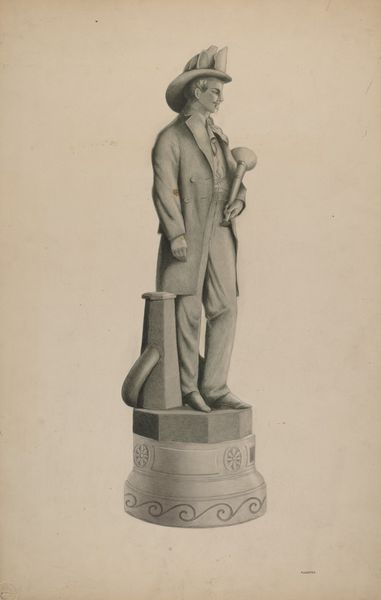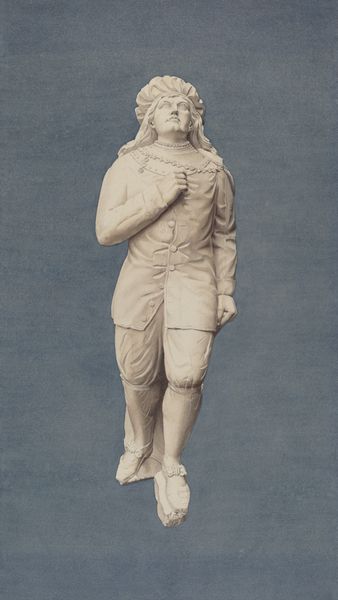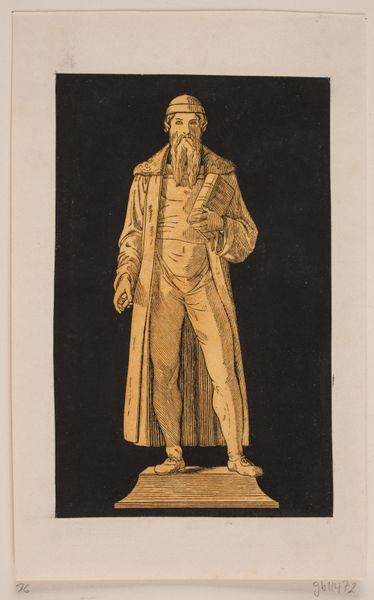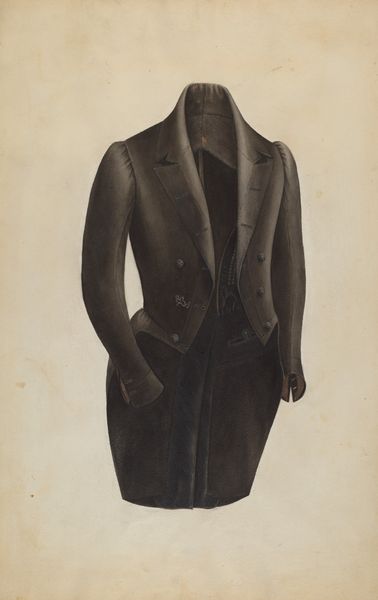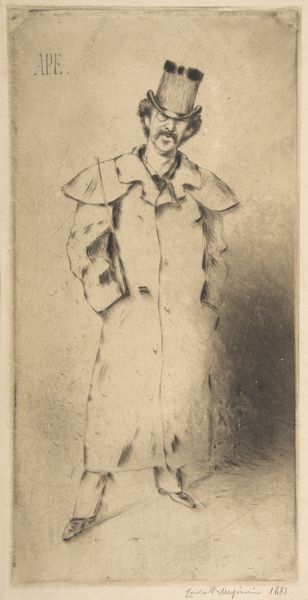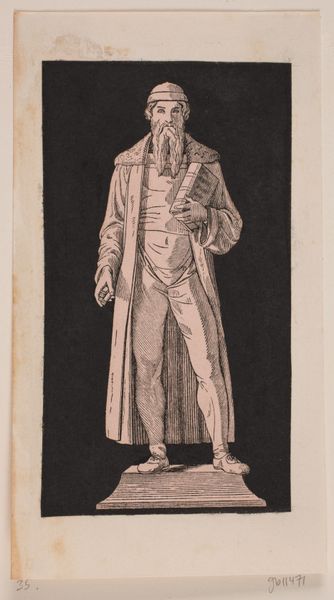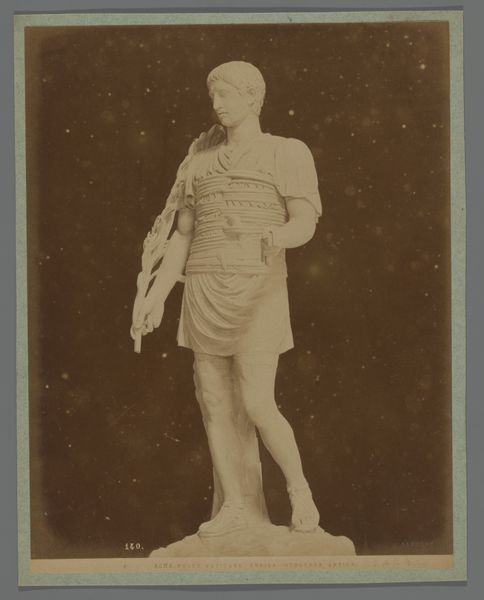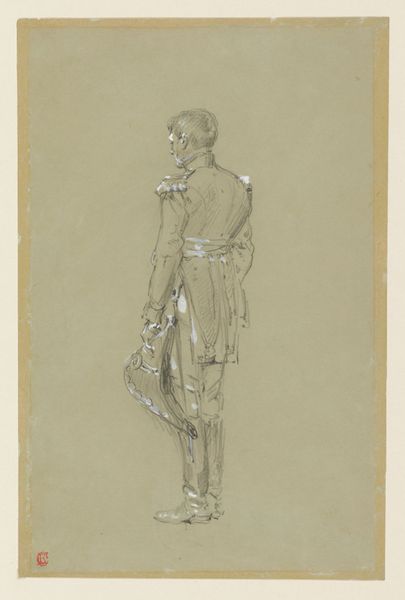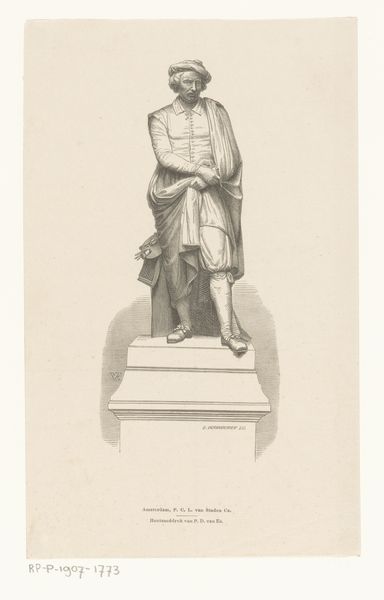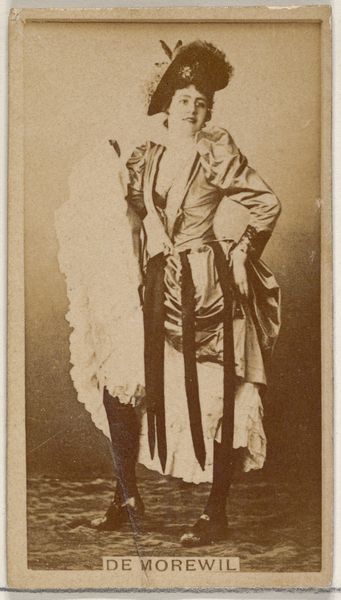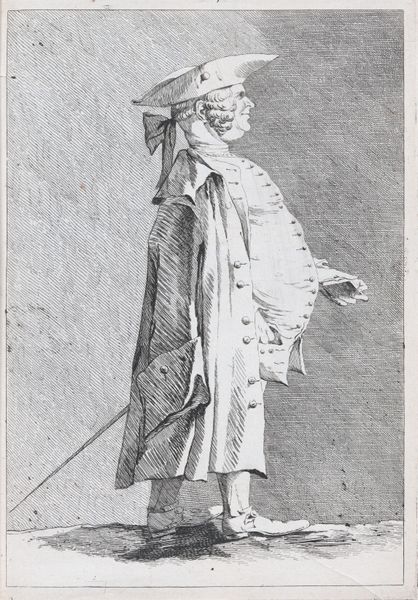
drawing, sculpture, pencil
#
portrait
#
drawing
#
figuration
#
form
#
classicism
#
sculpture
#
pencil
#
line
#
history-painting
#
academic-art
Dimensions: overall: 40.5 x 30.3 cm (15 15/16 x 11 15/16 in.)
Copyright: National Gallery of Art: CC0 1.0
Editor: This is an intriguing piece! It’s called "Technique Demonstration," created anonymously sometime between 1935 and 1942. It's a pencil drawing, depicting what looks like a sculpture. It almost appears as a ghostly figure. What’s your interpretation of it? Curator: My eye is drawn to the labor involved, the process of translating a three-dimensional object, potentially stone or plaster, into a two-dimensional rendering. Consider the societal context; anonymous indicates limited value. It emphasizes skill, practice; technique as a commodity accessible through academic structure, democratizing visual art beyond the limits of "genius." Editor: Democratizing art? In what way? Curator: By making technical skill the focus. Academic art training, prevalent during that period, valued specific techniques above individual expression, as this demonstration suggests. Note the meticulous rendering of fabric folds, facial structure. These skills are learnable, and can therefore challenge the notion that artistic ability is an inherent gift of only some, regardless of class. Editor: I see, like skill as a trade. That does shift the perspective, thinking about the production rather than inherent 'artistic' value. The work focuses the attention toward labour. Does this reflect an understanding of value that differs from other portraits in art history? Curator: Exactly! While traditional portraits often celebrate the sitter's status or personality, this drawing highlights the labour-intensive process of artistic creation itself. The statue is less about that individual and more about technique. The emphasis on the material conditions of art production—pencil, paper, skill. The means. Editor: That's such an interesting point, considering what skill meant for anonymous artist at the time. The labor going into "mastery," not "expression". It challenges what we’ve previously considered high and low art forms. Curator: Precisely, recognizing value beyond traditional aesthetics invites reflection upon broader artistic labor, production and societal interpretation.
Comments
No comments
Be the first to comment and join the conversation on the ultimate creative platform.
